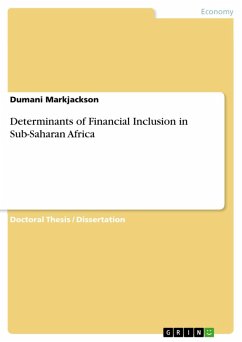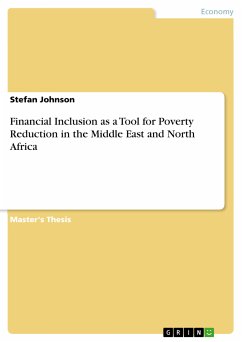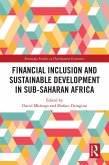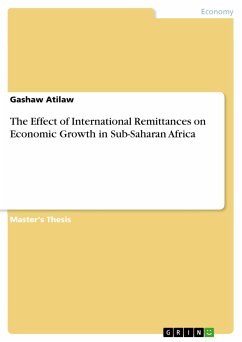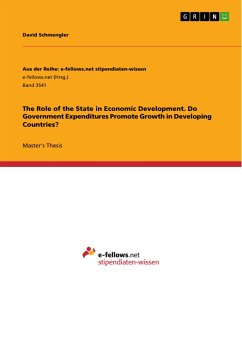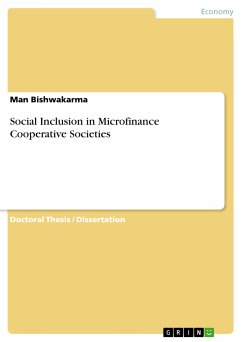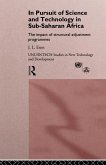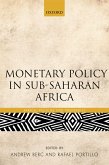Doctoral Thesis / Dissertation from the year 2021 in the subject Economics - Finance, grade: Distinction (4.81), Wilberforce Island (Post Graduate School), course: Banking and Finance, language: English, abstract: The study examines the determinants of access to and usage of financial services in sub-Saharan Africa. The study employed panel data spanning 2006 to 2018 from 12 sub-Sahara African countries. The ex-post facto research design and econometric techniques were employed to explain the determinants of financial inclusion. The descriptive statistics was employed to describe the nature of the data. The LLC and IPS tests of stationarity indicated that all the variables were stationary at first difference. The Pearson pairwise correlation test revealed that the strength of association among the regressors were weak. The panel data was estimated using Pooled OLS, Fixed Effects, and Random Effects panel estimation techniques. The findings show that aside GDP per capita and political stability that had insignificant effect on access; money supply and regulatory quality had a significant effect on access to financial services. Furthermore, the findings suggest that aside from regulatory quality and deposit rate, GDP per capita and automated teller machine exerts a significant effect on financial usage. The study further reveals that money supply and lending rate significantly stimulates usage of loan accounts, while regulatory quality was insignificant. The study concludes that a combination of macroeconomic, institutional, and bank-level factors determine the level of financial inclusion in sub-Saharan Africa. The study recommends that regulators should encourage a conducive environment that spurs competition and innovation in the private sector. This may encourage financial access and usage due to economic growth and rising GDP per capita levels. Regulators should adopt policies like Regulatory Impact Assessment (RIA) in order to enhance the regulatory quality and boost public confidence. Regulators and banks should encourage the expansion of the number of functional point of service outlets in the region. Finally, government agencies should formulate policies that would encourage socio-political stability for the financial service industry to strive in the region.
Dieser Download kann aus rechtlichen Gründen nur mit Rechnungsadresse in A, B, BG, CY, CZ, D, DK, EW, E, FIN, F, GR, HR, H, IRL, I, LT, L, LR, M, NL, PL, P, R, S, SLO, SK ausgeliefert werden.

